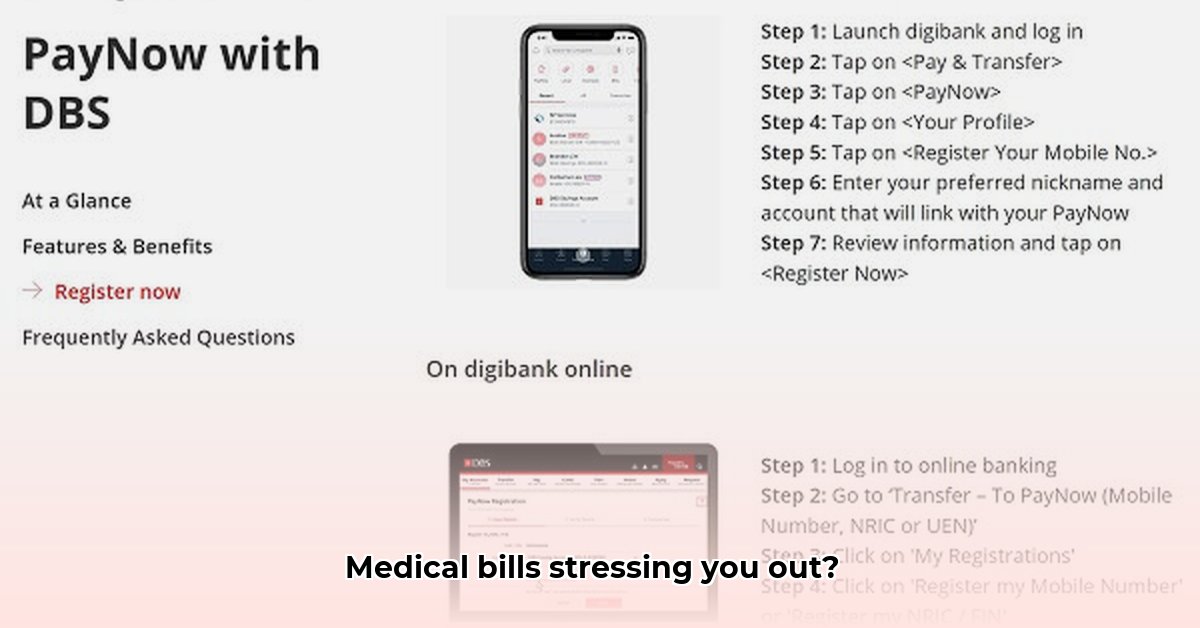
Understanding Your Medical Payment Options
Paying medical bills can be confusing, but it doesn't have to be stressful. This guide helps you navigate the various payment methods available, highlighting the pros, cons, and security implications of each. Whether you prefer traditional methods or embrace online convenience, we'll equip you to manage your medical finances confidently.
Online Payment Methods: Speed and Convenience
Many healthcare providers offer online payment portals, often integrated into patient portals. These platforms provide 24/7 access, allowing you to pay from anywhere with an internet connection. Common payment options include paying directly from your bank account or using credit/debit cards. This method prioritizes speed and convenience, eliminating trips to the post office or the risk of lost mail.
Pros of Online Payments:
- Speed: Payments are processed quickly.
- Convenience: 24/7 access from any location with internet connectivity.
- Accessibility: Often integrated into existing patient portals.
- Tracking: Easy online payment tracking.
Cons of Online Payments:
- Technical Skills: Requires basic computer and internet literacy.
- Security Risks: While reputable providers use robust security, risks exist. Always check for "https" in the website address to verify a secure connection.
- Internet Dependency: Reliable internet access is necessary.
Offline Payment Methods: The Traditional Approach
Traditional methods such as mailing a check or paying in person remain viable payment options. While familiar and comfortable for many, they typically involve slower processing times and potential drawbacks.
Pros of Offline Payments:
- Familiarity: A well-established and comfortable method for many.
- No Technology Required: No computer or internet access needed.
Cons of Offline Payments:
- Slow Processing: Payment processing can take considerably longer.
- Delays: Lost mail is a possibility, leading to late fees.
- Limited Tracking: Tracking payments can be difficult, unless certified mail is used.
- Increased Risk of Loss: The chance of your payment getting lost or stolen is higher than with online methods.
Comparing Online and Offline Payment Methods
The table below summarizes the key differences between online and offline methods:
| Method | Speed | Convenience | Security | Cost |
|---|---|---|---|---|
| Online Payment Portals | Fast | High | Moderate to High | Generally Low |
| Mail-in Checks | Slow | Low | Low | Low |
| In-Person Payment | Moderate | Moderate | Moderate | Low |
Security and Privacy: Protecting Your Financial Information
Protecting your financial and personal information is crucial, regardless of your chosen payment method. For online payments, always verify the website's security using the "https" indicator. For offline payments, consider certified mail to track your payment. Remember that healthcare providers are obligated to protect your health information under HIPAA regulations. However, taking proactive steps to secure your information is always advisable.
Choosing the Right Payment Method: A Step-by-Step Guide
Assess your technical skills: If you're comfortable with online banking, online portals offer the most efficient option.
Check provider options: Contact your healthcare provider to confirm accepted payment methods.
Prioritize security: Always take steps to protect your personal and financial details.
Consider speed and convenience: Weigh the speed and ease of online payments against your preference for traditional methods.
Explore specialized options: Consider services like PayNow or similar platforms, which might offer enhanced security.
The Future of Medical Bill Payments
The healthcare industry is undergoing a digital transformation. The future likely involves even more user-friendly and integrated payment systems, improved security features, and smoother integration with electronic health records (EHRs). Services like PayNow are expected to gain more widespread adoption, streamlining the billing process for both patients and providers.
Key Takeaways & Recommendations
- Multiple payment options exist, each with specific advantages and disadvantages.
- Online methods offer convenience but require careful security checks.
- Offline methods are familiar but may be slower and carry a higher risk of loss or delay.
- The best method depends on your technical comfort level and security priorities.
- Always verify the legitimacy of online platforms and prioritize security.
Dr. Anya Sharma, MD, Chief Medical Information Officer at Metropolitan General Hospital, emphasizes, "Patients should always prioritize secure payment gateways, regardless of their chosen payment method. Look for 'https' to ensure data encryption and always report any suspicious activity immediately."